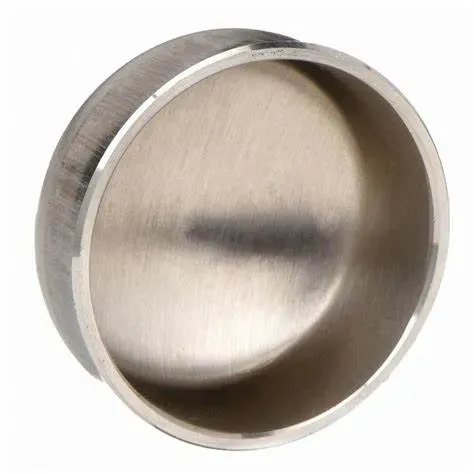-
Cangzhou Yulong Steel Co., Ltd.
-
Phone:
+86 13303177267 -
Email:
admin@ylsteelfittings.com
- English
- Arabic
- Italian
- Spanish
- Portuguese
- German
- kazakh
- Persian
- Greek
- French
- Russian
- Polish
- Thai
- Indonesian
- Vietnamese
- Zulu
- Korean
- Uzbek
- Hindi
- Serbian
- Malay
- Ukrainian
- Gujarati
- Haitian Creole
- hausa
- hawaiian
- Hebrew
- Miao
- Hungarian
- Icelandic
- igbo
- irish
- Japanese
- Javanese
- Kannada
- Khmer
- Rwandese
- Afrikaans
- Albanian
- Amharic
- Armenian
- Azerbaijani
- Basque
- Belarusian
- Bengali
- Bosnian
- Bulgarian
- Catalan
- Cebuano
- China
- China (Taiwan)
- Corsican
- Croatian
- Czech
- Danish
- Esperanto
- Estonian
- Finnish
- Frisian
- Galician
- Georgian
- Kurdish
- Kyrgyz
- Lao
- Latin
- Latvian
- Lithuanian
- Luxembourgish
- Macedonian
- Malgashi
- Malayalam
- Maltese
- Maori
- Marathi
- Mongolian
- Myanmar
- Nepali
- Norwegian
- Norwegian
- Occitan
- Pashto
- Dutch
- Punjabi
- Romanian
- Samoan
- Scottish Gaelic
- Sesotho
- Shona
- Sindhi
- Sinhala
- Slovak
- Slovenian
- Somali
- Sundanese
- Swahili
- Swedish
- Tagalog
- Tajik
- Tamil
- Tatar
- Telugu
- Turkish
- Turkmen
- Urdu
- Uighur
- Welsh
- Bantu
- Yiddish
- Yoruba

Aug . 13, 2024 02:12 Back to list
3 inch blind flange specifications and applications for plumbing and industrial purposes explained comprehensively
Understanding the 3 Inch Blind Flange Applications, Specifications, and Benefits
In industrial piping systems, the integrity and reliability of connections are paramount. Among various components used to ensure seamless operations, the blind flange stands out as a critical element. This article delves into the specifics of a 3 inch blind flange, highlighting its applications, specifications, and the advantages it offers in various systems.
What is a Blind Flange?
A blind flange is a type of flange used in piping systems to close the end of a pipe, essentially blinding it. Unlike other flanges that facilitate connections between pipes or other components, blind flanges do not have a central hole, making them ideal for terminating lines, preventing fluid escape, or accessing a closed system for maintenance.
Specifications of a 3 Inch Blind Flange
The 3 inch blind flange adheres to certain dimensions and specifications crucial for its functionality. Typically, the dimensions will be based on standards such as ANSI (American National Standards Institute), ASME (American Society of Mechanical Engineers), or API (American Petroleum Institute). Most commonly, a 3 inch blind flange will have the following specifications
- Nominal Diameter 3 inches - Pressure Class Available in various classes ranging from 150 to 2500 psi, with common classes including 150, 300, and 600. - Material Options Blind flanges are manufactured from various materials, including carbon steel, stainless steel, and alloy steels to cater to different environments and resistances to corrosion. - Thickness The thickness varies by pressure class; for instance, a Class 150 flange will typically have a thickness of around 0.5 inches, while a Class 600 flange can be up to 1 inch thick. - Bolt Hole Pattern This should conform to the standard pattern relevant to the piping standards being used, with bolt holes usually arranged in a circular pattern.
Applications of 3 Inch Blind Flanges
3 inch blind flange

The versatility of 3 inch blind flanges makes them useful in numerous industries
. Common applications include1. Oil and Gas Industry Used to seal off pipelines temporarily or permanently during maintenance or system upgrades. 2. Water Treatment Facilities Blind flanges are employed to close off sections of piping for repairs or modifications without interrupting the entire system flow. 3. Chemical Processing Used in systems handling hazardous materials, blind flanges prevent leaks and ensure safety by isolating sections of the piping. In essence, any application that requires stopping fluid flow or securing pipe outlets can benefit from the use of a 3 inch blind flange.
Benefits of Using 3 Inch Blind Flanges
Choosing a blind flange, particularly a 3 inch model, provides several advantages
- Cost-Effective Blind flanges are generally more cost-effective than other types of flanges due to their straightforward design and manufacturing process. - Simplicity Their design simplifies the piping system, reducing potential points of failure caused by multiple connections. - Ease of Maintenance By allowing for straightforward access to closed-off sections, blind flanges facilitate easier maintenance and troubleshooting. - Customizability With various materials and pressure ratings available, 3 inch blind flanges can be tailored to meet specific operational requirements, ensuring durability and reliability.
Conclusion
In summary, the 3 inch blind flange is a vital component used extensively in various industrial applications. Its ability to effectively seal off piping systems makes it crucial for maintenance and safety in numerous sectors. By understanding its specifications, applications, and benefits, engineers and technicians can make informed decisions when selecting the right flanges for their systems, ultimately contributing to safer and more efficient operations.
Latest news
-
ANSI 150P SS304 SO FLANGE
NewsFeb.14,2025
-
ASTM A333GR6 STEEL PIPE
NewsJan.20,2025
-
ANSI B16.5 WELDING NECK FLANGE
NewsJan.15,2026
-
ANSI B16.5 SLIP-ON FLANGE
NewsApr.19,2024
-
SABS 1123 FLANGE
NewsJan.15,2025
-
DIN86044 PLATE FLANGE
NewsApr.19,2024
-
DIN2527 BLIND FLANGE
NewsApr.12,2024
-
JIS B2311 Butt-Welding Fittings LR/SR 45°/90° /180°Seamless/Weld
NewsApr.23,2024











